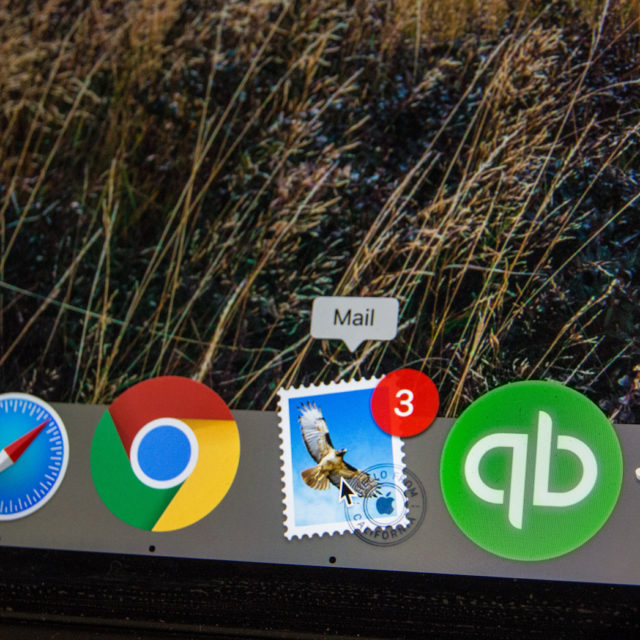As our world becomes more diverse, it’s crucial for organizations to understand how different cultures interact with one another. This is where multiculturalism surveys come in – a powerful tool that helps companies measure attitudes towards diversity, inclusion, and cultural competence among employees or other stakeholders.
This article gives readers all the information they need to conduct multicultural surveys, including the most recent and efficient survey methods and questions. Continue reading to learn more.

What Is Multiculturalism?
Multiculturalism surveys provide valuable insights into how individuals perceive their workplace culture and identify areas for improvement. By measuring employee attitudes towards diversity and inclusion through these surveys, companies can create safer work environments where everyone feels valued regardless of their background.
The purpose of conducting multiculturalism surveys is twofold. First, they help organizations better understand the needs and experiences of their diverse workforce. Secondly, they enable companies to develop more effective diversity management strategies that promote inclusivity and respect for all cultures.
By promoting cross-cultural understanding through training programs based on survey results, businesses can improve organizational engagement while reducing costly turnover rates. In fact, studies have shown that workplaces with high levels of cultural awareness experience higher rates of employee satisfaction and retention.
In short, if you want your company to be the best it can be when it comes to fostering an inclusive workplace culture that values diversity, then conducting multiculturalism surveys are essential.
In the following sections, we will explore the various types of multiculturalism surveys available and the best practices for designing them effectively so you can discover what your employees think about your organization’s values!
Types of Multiculturalism Surveys
There are different types of surveys available to measure attitudes, perceptions, climate, and employee engagement. Each type has its own advantages and disadvantages.
Choosing the right survey is crucial to ensure accurate data that can help make informed decisions.
Attitude Surveys
These surveys measure people’s attitudes toward cultural diversity and inclusion. They ask questions about how comfortable people feel working or interacting with individuals from different cultures, their perceptions of cultural differences, and their willingness to learn more about other cultures.
Perception Surveys
These surveys aim to understand how employees perceive the company’s culture regarding diversity and inclusion. They may ask questions about whether employees feel valued for their unique backgrounds, whether they believe there are equal opportunities for all employees regardless of race or ethnicity, and if they have witnessed any instances of discrimination or bias.
Climate Surveys
Climate surveys assess the overall workplace environment as it relates to diversity and inclusion. Questions may cover topics such as communication between colleagues from different backgrounds, access to resources for diverse groups within the organization, leadership commitment to promoting a diverse workforce, etc.
Employee Engagement Surveys
These surveys focus on employee engagement levels across various aspects related to work-life balance, including job satisfaction levels among culturally diverse teams, perceived fairness in promotions/compensation, sense of belongingness at work, etc.
When choosing which type(s) of survey(s) will be most beneficial for your organization’s needs, consider factors like budget constraints, time frame, organizational goals/objectives (what do you want your survey results to achieve?), audience demographics (who will be taking this survey?), etc.
It is important not only to choose an appropriate type but also to design effective questions that elicit honest responses while avoiding biases or leading language which could skew results one way or another.

Designing a Multiculturalism Survey
As experts in multiculturalism surveys, we understand the importance of careful planning and attention to detail. To design a successful survey that accurately measures attitudes toward diversity and inclusion, follow these key steps:
- Define your research question: Before you begin designing your survey, it’s crucial to have a clear understanding of what information you want to gather. What specific questions do you need to be answered?
- Choose appropriate questions: Once you’ve defined your research question, select relevant and concise questions that will provide valuable insights into diverse cultures within your workplace or community.
- Consider cultural sensitivity: When designing a multiculturalism survey, it’s essential to consider cultural sensitivity to avoid offending or alienating any particular group of people.
- Determine sample size and distribution method: Decisions about sample size (the number of participants needed for statistical significance) and distribution method (e.g., random sampling) should be based on factors such as budget constraints and time limitations.
- Pilot test the survey: Before administering the final version of your survey, pilot testing can help identify any issues with wording or formatting that may affect response rates or data quality.
- Analyze results from the pilot test: After conducting a pilot test, analyze its results carefully so that necessary changes can be made before administering the final version of your survey.
- Finalize design and distribute surveys: Once all revisions have been made based on feedback from pilot testing analysis, finalize the design by distributing surveys through various channels like email invitations, etc., depending upon target audience demographics/preferences/availability, etc.
By following these steps, researchers can ensure they collect accurate data that provides valuable insights into diverse cultures within their organization or community at large. It ultimately helps improve diversity management strategies at workplaces leading toward better employee engagement & inclusion, resulting in higher productivity levels along with improved safety measures for everyone involved – including patients if applicable!
Don’t miss out on this beneficial opportunity; start surveying today!
How To Conduct a Multiculturalism Survey
Collecting accurate and meaningful data from diverse populations is very important. That’s why we’ve compiled a list of tips to help you administer your survey effectively while ensuring accuracy in data collection.
- Choose the Right Method: There are several methods for conducting surveys, including online surveys, phone interviews, and paper-based questionnaires. Consider which method is best suited for your target audience and budget.
- Pilot-Test Your Survey: Before launching your survey, pilot-test it with a small group of people who represent your target audience. This will help you identify any issues with the questions or response options before administering the survey more widely.
- Ensure Confidentiality: We know that respondents may be hesitant to answer honestly if they feel their privacy is at risk. Guarantee confidentiality and anonymity where possible to ensure respondents feel comfortable answering truthfully.
- Use Clear Language: It’s important that all questions are written in clear language that can be easily understood by all respondents regardless of their cultural background or education level.
- Provide Adequate Time: Allow enough time for respondents to complete the survey without feeling rushed or pressured into giving quick answers.
- Follow-Up With Non-Respondents: If there are individuals who do not respond to the initial invitation to participate in the survey, consider following up with them via email or phone call as a reminder.
- Monitor Response Rates: Keep track of response rates throughout the data collection period so that you can adjust strategies, if necessary, to increase participation rates among certain groups.
- Check Data Quality Regularly: To maintain ethical standards around privacy and confidentiality concerns, regularly check data quality during data collection by reviewing responses for completeness and consistency across different sections of the questionnaire.
By implementing these expert tips when conducting your multiculturalism survey, you’ll be able to collect accurate information from diverse populations while maintaining ethical standards around privacy and confidentiality concerns – ultimately improving inclusion within organizations!
Analyzing Results
This stage is crucial as it helps identify patterns and trends in responses received, which can be used for decision-making purposes. Here are some tips on how to effectively analyze your survey data:
- Firstly, ensure that all data is clean and organized by checking for missing values or errors in responses before starting any analysis.
- Next, choose appropriate statistical tools, such as SPSS or Excel, depending on the type of questions asked in your survey.
- Identify key variables that will help answer research questions posed by stakeholders who commissioned or funded the study and other interested parties, such as policymakers or academics working in related fields.
- Run descriptive statistics like mean, median, mode, standard deviation, etc., which provide an overview of how respondents answered each question on average.
- Conduct inferential statistics to make generalizations about a larger population based on sample size while controlling for factors like age group or gender distribution among respondents.
- Interpret findings accurately by identifying trends and patterns in responses that may be useful for decision-making purposes.
- Finally, report findings back to stakeholders who commissioned/funded the study and other interested parties such as policymakers/academics working in related fields.
In conclusion, analyzing results from a multiculturalism survey requires careful attention to detail and proper use of statistical tools available at one’s disposal, depending upon their needs/goals/objectives. Improve employee engagement and workplace safety by understanding organizational culture values across cultures.
Follow these steps for effective inclusion initiatives that benefit both employees and the company.

Interpreting Results
This is another important stage, as it allows you to draw meaningful conclusions from your survey findings and make informed decisions about diversity management strategies within your workplace. To help you interpret your multiculturalism survey results like a pro, here are some tips:
- Identify trends and patterns: Look for commonalities in responses across different demographic groups or questions. For example, do certain age groups tend to respond differently than others? Are there any consistent themes that emerge from open-ended questions?
- Compare results with benchmarks: If available, compare your survey results with industry or organizational benchmarks to see how you stack up against other companies or institutions.
- Consider the context: When interpreting your results, keep in mind the broader social and cultural context in which they were collected. For example, conducting a survey on attitudes toward immigration during a period of heightened political tension may affect respondents’ answers.
- Use statistical tools: Statistical analysis can help identify significant differences between groups or variables within the data set.
- Seek expert advice: If you’re unsure about how best to interpret your survey findings, seek out professional advice from experts who specialize in multiculturalism research.
Conducting surveys on multiculturalism is beneficial for organizations looking to create inclusive environments that value diversity among their employees and customers alike while improving safety measures through measuring employee engagement rates using questionnaires designed specifically around cross-cultural values, such as Yale University School of Medicine’s Center for Outcomes Research & Evaluation (CORE).
By designing, conducting, analyzing, and interpreting the results of these surveys, organizations can gain valuable insights into employee attitudes towards diversity and inclusion at work and identify areas where improvements can be made within an organization’s culture and policies regarding diversity management strategies at workplaces, etc., highlighting future research directions needed for better understanding cultural differences among people living together harmoniously within a multicultural society.
Reporting Findings
After analyzing and interpreting your data, it’s important to communicate your results back to stakeholders who commissioned or funded the study, as well as other interested parties such as policymakers or academics working in related fields.
To ensure that you report your findings effectively, follow these key steps:
- Start with an executive summary: Begin by providing a brief overview of the most important findings from your survey. This should include any significant trends or patterns that emerged from the data.
- Provide context: To help readers understand the significance of your findings, provide some background information on why you conducted the survey and what questions you were trying to answer.
- Present your data: Use charts, graphs, and tables to present your data clearly and concisely. Be sure to label all visual aids properly so that readers can easily understand what they’re looking at.
- Interpret your results: Once you’ve presented your data, it’s time to interpret what it means for diversity management strategies at workplaces, etc. Identify any significant trends or patterns that emerged from the data and explain their implications for cross-cultural communication skills training needs.
- Discuss limitations: No survey is perfect; therefore, make sure that you discuss any limitations, such as sample size issues or response rate problems, which may affect how generalizable these results are beyond a specific population.
Conclusion
As our society becomes more diverse, it is crucial for organizations to understand the cultural differences among their employees and patients. Multiculturalism surveys are a powerful tool that can help companies measure employee attitudes toward inclusion and safety in the workplace.
Throughout this article, we have explored the importance of conducting multiculturalism surveys, including how to design and conduct them effectively, analyze results, interpret findings, and report back to stakeholders and other interested parties.
By measuring employee attitudes towards diversity management strategies at workplaces through these surveys, companies can improve their organizational values while also benefiting from increased engagement rates among employees. This includes identifying areas where training may be needed or where changes need to be made within an organization’s culture.
Multiculturalism surveys provide a cost-effective way for companies to measure these attitudes without having to rely on costly legal fees associated with discrimination lawsuits. They help identify what works best when it comes down not only improving lives but also generating better business outcomes overall!
So, if you want your company name included in the litany of those who effectively manage diversity in today’s world – then conducting multiculturalism surveys should be a top priority! With proper surveying techniques in place along with effective analysis methods used during interpretation stages – businesses can discover what works best when it comes down not only improving lives but also generating better business outcomes overall!




